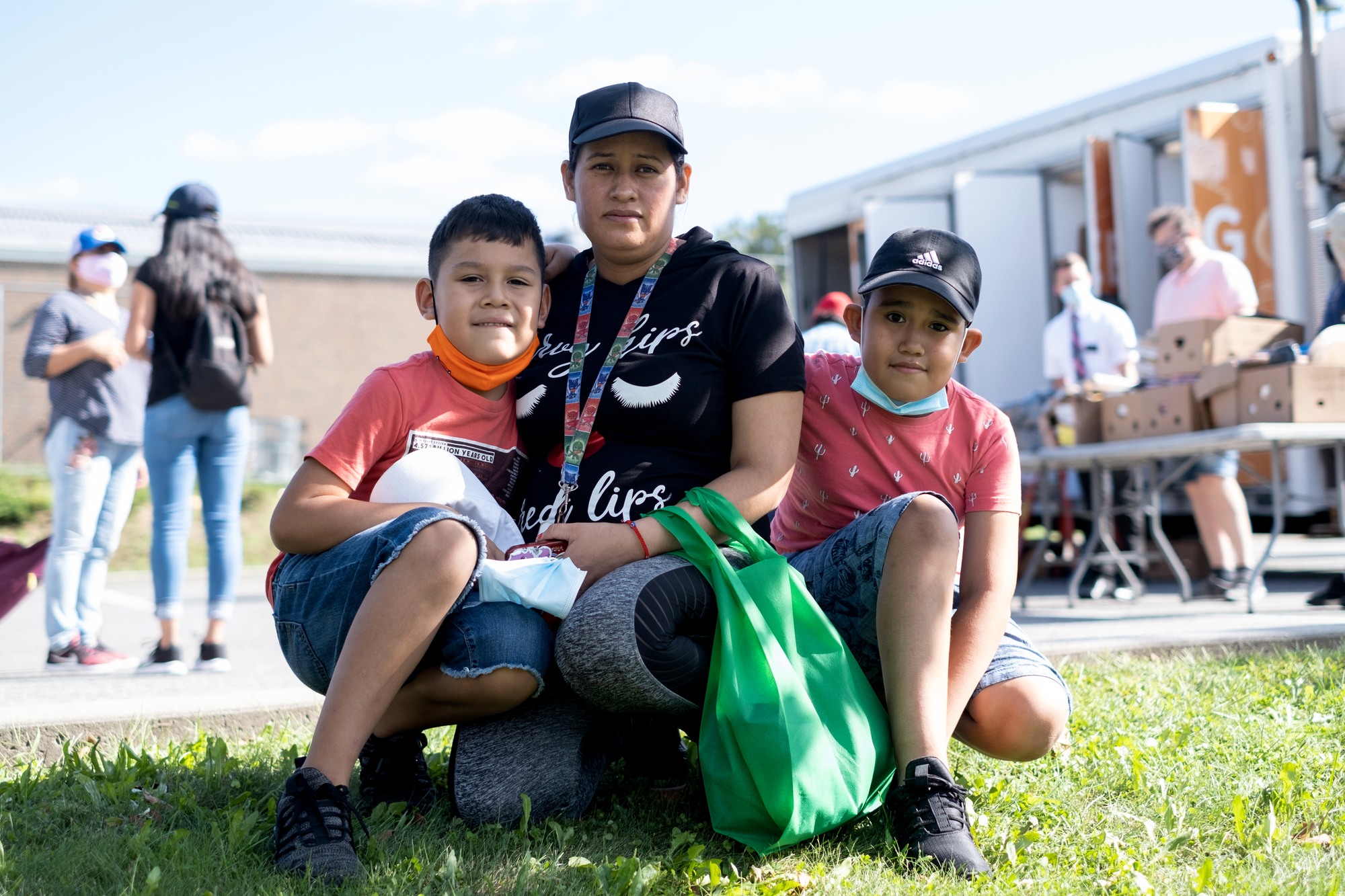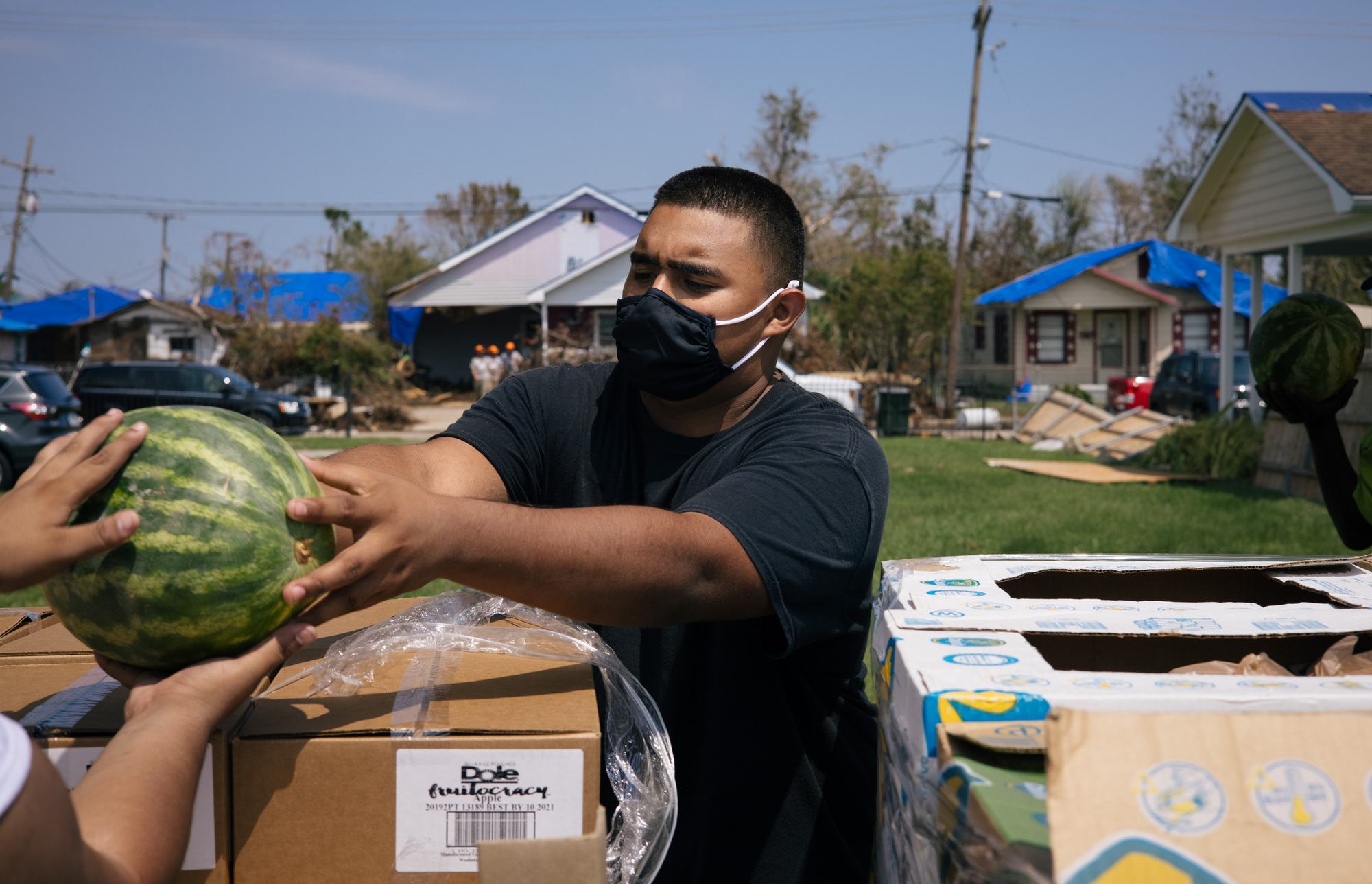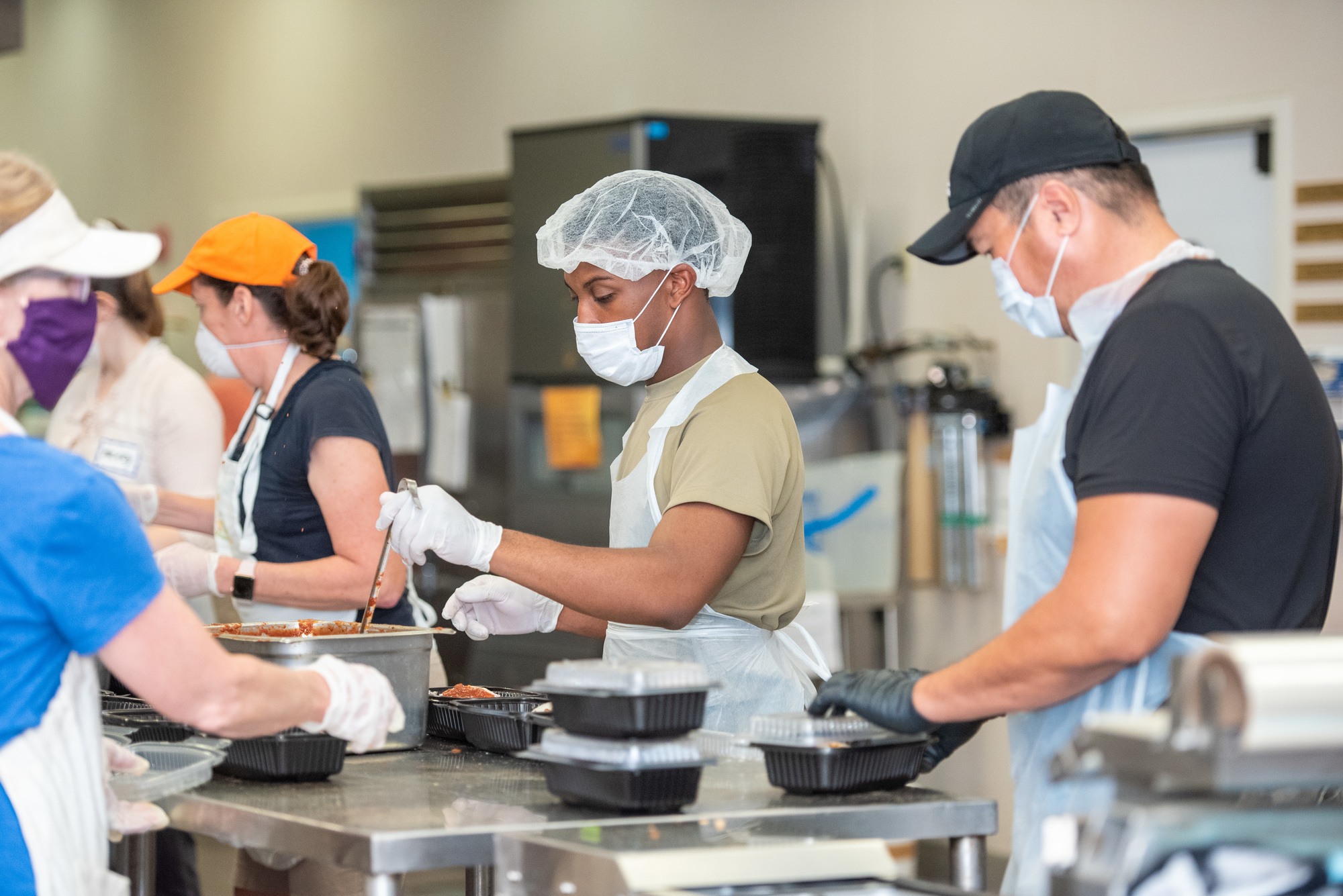The power of data to end hunger in America
For Beatriz Yarce and her sons Alexis and Muriel, visiting the Feeding Westchester mobile pantry in White Plains, N.Y., is more than a run for groceries. As happens with most Feeding America® food pantries, this place is a community center for families to connect with other neighbors and access services like English lessons, immigration referrals, and high school tutoring, in addition to food assistance. “It helps the community, the families, and kids...and you have a lot of opportunities to learn English,” Beatriz Yarce says.
Claire Babineaux-Fontenot, CEO of Feeding America, states, “Our vision is an America where no one is hungry, where every single person has access to the foods that they say they desire and need in order to live rich, full lives.”
When it comes to understanding and addressing hunger in the U.S., Feeding America, the largest hunger-relief organization in the country, is among the best equipped organizations to provide impactful insights for action. With a mission to ensure equitable access to nutritious food in America, Feeding America collaborates with member food banks, policymakers, supporters, and the communities they serve. Their network includes 200 food banks and more than 60,000 food pantries, distributing more than 6.6 billion meals to more than 40 million people each year.
Feeding America's network includes 200 food banks and more than 60,000 food pantries, distributing more than 6.6 billion meals to more than 40 million people each year.
Stephanie Zidek, senior director of data & analytics at Feeding America, touches on the fact that “There is hunger in every single county in the United States. Even the ones that you think are the wealthiest, there are folks that are in need of charitable food assistance and food banks are trying to provide that support in every community.”
Everyone has a desire for every member in their community to have access to the nutrition that they need in order to thrive. “Data helps us tell that story in powerful ways,” highlights Babineaux-Fontenot.

A data breakthrough creates a near real-time monitor of hunger in America
As the latest chapter in its seven-year partnership with Tableau Foundation, Feeding America is gathering and analyzing data to understand where people with food insecurity live, what they need, what they prefer, and how often they need it. As part of this data-driven approach, Feeding America has developed a new software tool for the network of food banks and food pantries to collect data electronically and securely from neighbors as part of the intake process. With this tool, Feeding America will create a massive, near real-time data set as a single source of truth for the entire network on the needs of 38 million individuals experiencing food insecurity across the country, adhering to the highest standards for privacy and security of their personal information.
This technology will provide near real-time data and insights to the 15,000 front-line staff who are providing nourishing meals to families in need. Timely insights on the people served by the Feeding America network will allow for improved planning, food sourcing, and equitable distribution of food and resources to communities and individuals in need –ultimately enabling faster decision making for food bank and food pantry leaders across the country.
Back in 2017, David Pickering, a Tableau Foundation data fellow from the Mid-Ohio Food Collective, a Feeding America member food bank, built a dashboard to assess the demand for charitable food assistance in his community. Flash forward, Feeding America decided to invest in the platform collecting the data that underpinned this dashboard and leverage the technology to scale to the entire network. Through this data, Feeding America can better calibrate its support for and with 200 member food banks. Critical insights like the specific days neighbors are visiting food pantries, if they are traveling long distances to access that pantry, or the type of food they need, will inform Feeding America food banks on how to tailor their services to respond to communities’ needs. This effort will create greater understanding about the challenges people face, allowing Feeding America and policy makers to target services and interventions to high-need populations.
This data can also equip agencies to help individuals to learn about other charitable food assistance programs, such as Supplemental Nutrition Assistance Program (SNAP), formerly known as food stamps. As Zidek explains, “Our neighbors may not always be aware if they're eligible or if they are eligible, where to go and get assistance to complete their application. So, some agencies and some food banks actually do the application assistance on site.”

Advocating for a different future
This data plays a critical role in conversations with legislators and policymakers to raise awareness of the impact of hunger in their communities. As Zidek notes, “We've definitely heard from diverse food banks who meet with different legislators, local, state, federal officials. And they think that hunger isn't really an issue in their district.” These insights empower food bank and food pantry leaders with hard data to prove their case and show the amount of people accessing their services, driving policy initiatives to address their needs.
As Lindsay Hendrix, CIO at Second Harvest Food Bank of Greater New Orleans and Acadiana, mentioned, “For us, we know that behind every piece of data there is a person, and those people are dramatically impacted by the work that we do. We take that work very seriously. People aren't seeing what we are seeing on a daily basis so how do we articulate what we're seeing?” notes Hendrix. “It's important to have that data, to be able to build the case.”

One impactful example of this type of data-driven engagement involves a Feeding America member food bank, as they influenced the promotion of state legislation to streamline the SNAP application process together with Medicaid. “They were able to go to the state government and say, ‘Folks who qualify for SNAP also likely qualify for Medicaid. The process to apply for both is very cumbersome and it's separate.’ So might we be able to eliminate a barrier and combine this application,” Zidek shares. They were able to advocate for this change and pass state legislation for the population’s benefit.
Improving equity with analytics
This new platform allows food banks and food pantries to access granular data about the people they serve, enabling them to target services and interventions when they are needed most. Insights like the frequency of access to these services is key to determining what type of resources food pantries need to allocate to their particular sites. “Having that real-time data that is directly tied to one household, one individual, helps us better understand exactly who we're serving year over year, because we know that number is huge. And how can we do advocacy out in the community about the needs that we are seeing as a network,” highlights Hendrix.
Through their partnership with Tableau Foundation, Feeding America also developed a racial equity dashboard to visualize the difference between communities. The data showed “a great difference between how communities of color experience poverty and how white communities experience poverty,” says Hendrix. These insights have allowed them to tailor their services and improve their decision-making process to better respond to the specific needs of the communities they serve.
“Being able to enable food banks across the country in particularly lesser-resourced areas, to have access to data, to tell stories about the work that they're doing through their data, is a way to create better equity across the country because donors, stakeholder, legislators, they respond to data. They respond to stories at an individual level about what someone is experiencing, but they also respond to the magnitude that data can provide,” states Hendrix.
“Data enables us to have a better sense of who we are serving and their specific needs. When people have choices, their experiences are more dignified,” states Babineaux-Fontenot. “We want to help our neighbors experiencing food insecurity understand they're not alone. This data and insight are powerful tools that will help us understand how we can be of better service to people.”
We want to help our neighbors experiencing food insecurity understand they're not alone. This data and insight are powerful tools that will help us understand how we can be of better service to people.
With this new platform, Feeding America will advance their mission to address hunger in the United States and help communities facing hunger.
To learn more about Feeding America’s impactful work, visit their website.
Subscribe to our blog
在您的收件箱中获取最新的 Tableau 更新。


